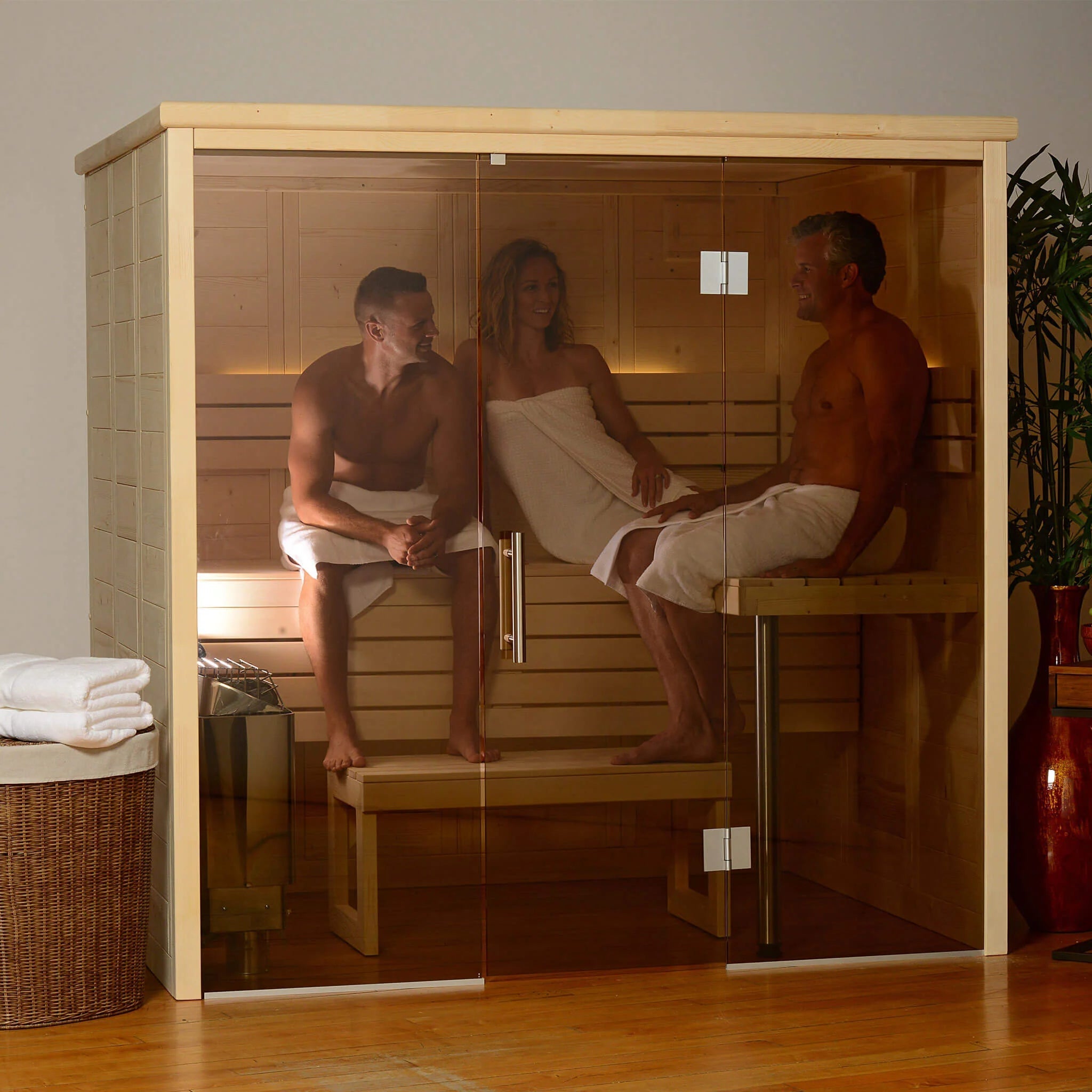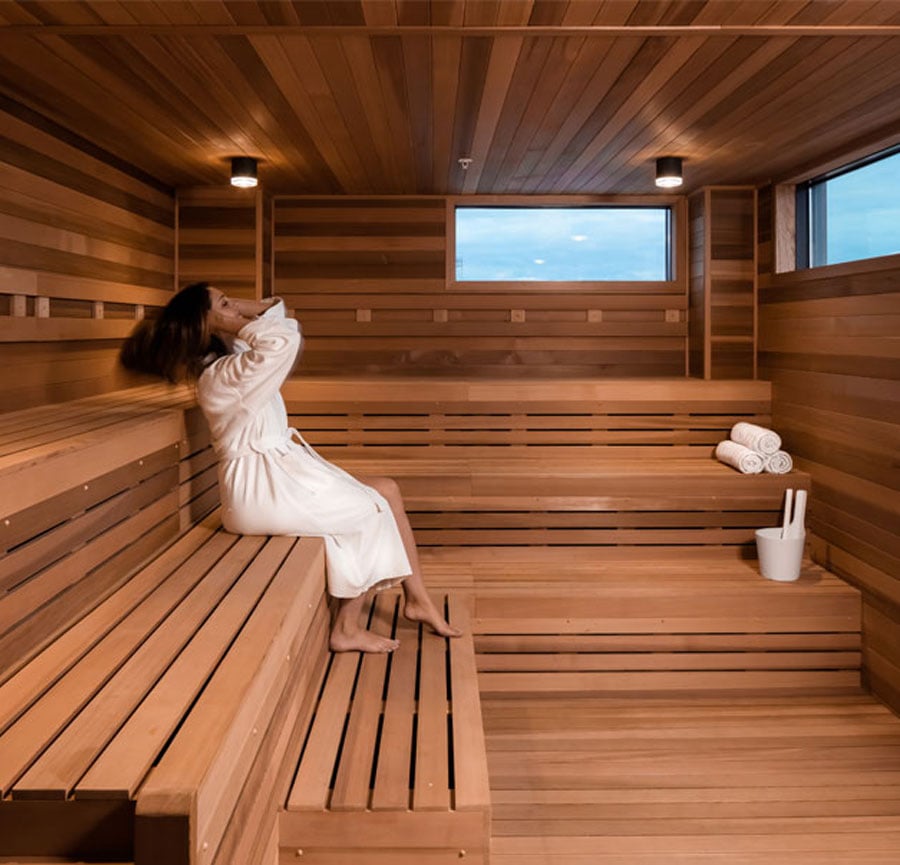All about Traditional Sauna
All about Traditional Sauna
Blog Article
The 8-Minute Rule for Traditional Sauna
Table of ContentsThe smart Trick of Traditional Sauna That Nobody is Talking AboutTraditional Sauna Fundamentals ExplainedGetting My Traditional Sauna To WorkNot known Incorrect Statements About Traditional Sauna The Ultimate Guide To Traditional Sauna
The majority of the weight shed in a sauna is water loss and is re-gained upon rehydrating. However, undoubtedly sauna can be a vital part of a healthy and balanced fat burning program. To check out the distinctions in between conventional and IR saunas, I will divide these right into proven, theoretical, and made distinctions.Therefore, the hottest factor in the saunawhich goes to the ceiling directly above the sauna heateris usually between 185 and 190 F. Claims that a conventional sauna exceeds 200 F is merely not real and not applicable for electrical saunas sold in the United States. The temperature for a far-infrared sauna is typically set in between 120 and 140 F; nevertheless, unlike the standard sauna, the goal in and IR area is not to accomplish a high temperature level.

When a typical sauna has been correctly heated, the sauna wall surfaces are warm, the air temperature level has actually accomplished set temperature and the rocks are very warmed. As an interesting side note, the heated wall surfaces and the rocks are discharging far-infrared warmth, incorporated with the heated air, to create an "covering warmth".
More About Traditional Sauna
When the high temperature is achieved, the components cycle on and off to keep the high temperature. Most traditional sauna users appreciate pouring water over the rocks to create steam to raise sauna moisture degrees. The advantages of pouring water over the rocks consist of: making the room much more comfy, dampening the nasal passages, and permitting the use of aromatherapy by mixing necessary oils with the water.

When the power gets in the body, it triggers the body temperature level to increase and eventually causes sweat. In an infrared sauna it is very important for the emitters/heaters to continue to be on nearly continuously. Considering that there is no mass of rocks to keep warm, the sauna will cool if the emitters shut down.
Some Known Facts About Traditional Sauna.
As Visit Website pointed out over, the sauna bather in an infrared area intends to place himself in front of operating emitters to get maximum take advantage of the warmth. The heating time for the two areas can be extremely various, depending on just how the areas are used. For a conventional sauna, a bather ought to permit 30-40 mins for the area to accomplish a wanted temperature level and to effectively pre-heat the rocks.

A well created sauna will generally attain a temperature level of 150-160 F in concerning 30-40 minutes. For hotter temperature levels, the space may require to warmth for a longer duration.
To some, 15 mins was "thrown away" while the infrared energy warmed the wood panels instead of warming a body, while others find a pre-heated space to be extra comfy and believe a raised beginning temperature level is essential to begin perspiring. The length of suggested usage for each area is about the same (10-15 minutes per session); nonetheless, due to the lower air temperature levels and the capability to really feel the impacts of infrared warm faster than a conventional sauna, it is not uncommon for a person to spend a total amount of 20-30 mins in an infrared sauna.
Not known Incorrect Statements About Traditional Sauna

The typical cost per kWH of electrical energy in the U.S. is approximately $0.11, so a 4.5 kW heating unit will certainly set you back around $.50 to run for one hour, if the heating system runs continually for one hour. Commonly a sauna heater will run for 75% of the first hour and 50% of subsequent hours on since the components cycle once the established temperature level is achieved.
A two individual far-infrared room is generally physically smaller than a conventional sauna, frequently concerning 4' x 4' or a knockout post smaller. The IR heating unit is commonly 1.5-1.7 kW utilizing a 120 volt 15 amp plug-in service. Considering that the space can be used earlier than a sauna space, we will presume the room is utilized for to of an hour consisting of warm up time.
Ultimately, there is a seldom talked about distinction in the social experience between both rooms. While our culture has shed several of the social benefit of the traditional sauna experience, it can be really socially gratifying (Traditional Sauna). From family members time in the sauna, to heart-felt discussions with better halves, to sauna partiesthe conventional sauna experience can bring about intimate mingling
Everything about Traditional Sauna
Most greater end infrared spaces consist of tinted light treatment, noise systems and helpful resources full-glass fronts.
Report this page